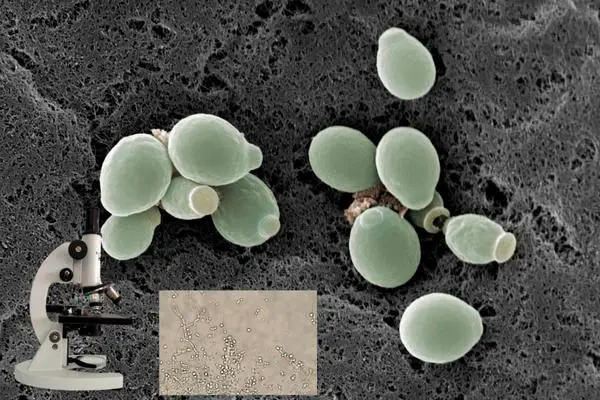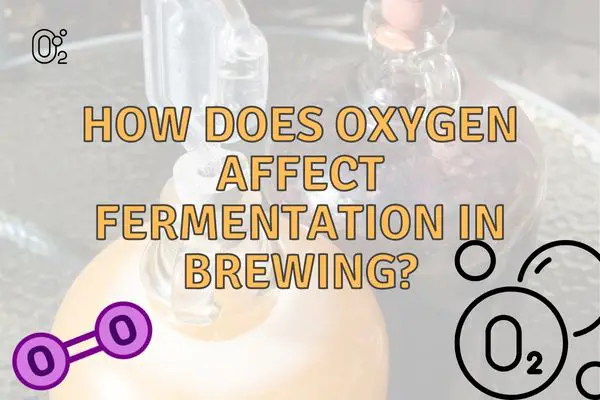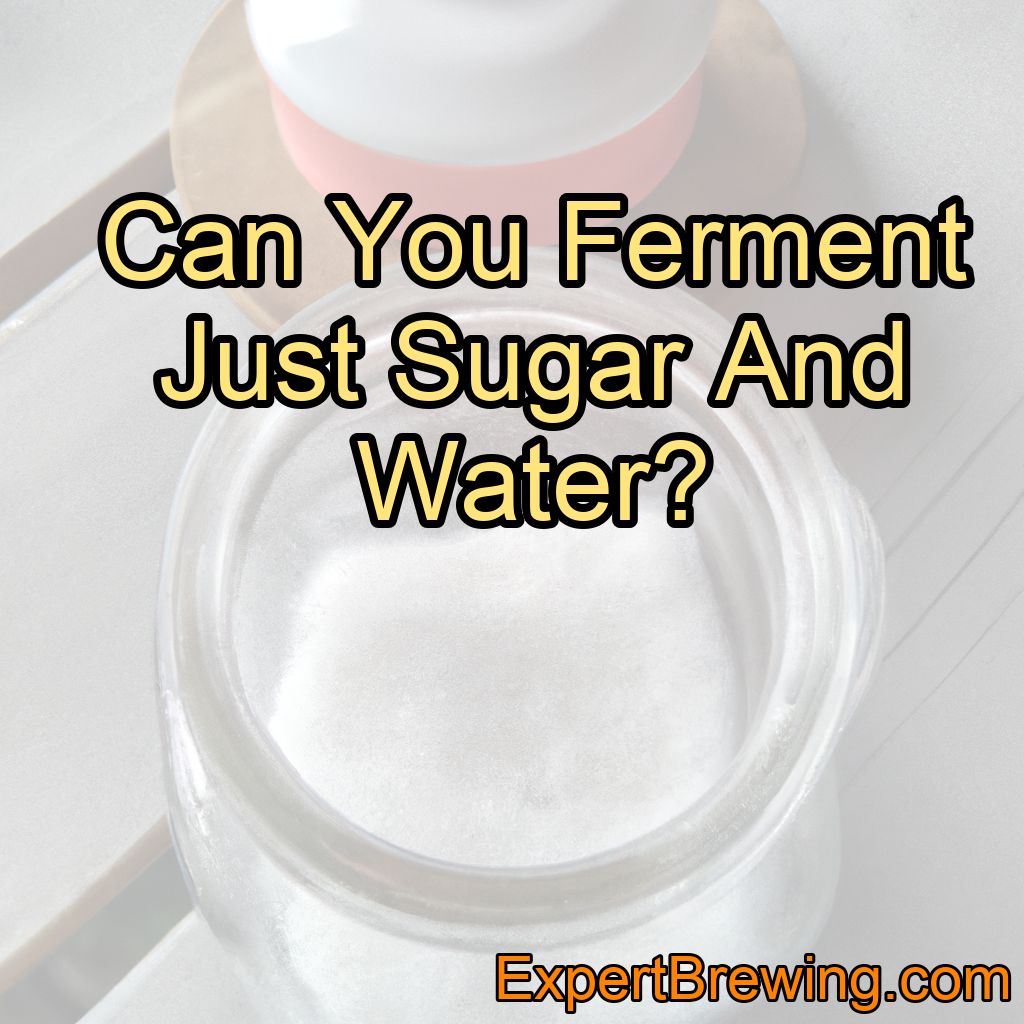As a home brewer for many years, I have experimented with various combinations of ingredients and techniques in search of the perfect brew.
One question that has come up frequently among fellow brewers is:can you ferment just sugar and water?
The answer, in short, is yes, you can. However, it is important to note that fermenting just sugar and water will produce a rather bland and unpalatable alcoholic beverage.
To enhance the flavor and achieve a better fermentation, it is highly recommended to add yeast nutrients and some form of flavoring e.g. fruit juice to the mix.
In this blog post, I will discuss in detail the process of fermenting sugar and water, the role of yeast nutrients, and other factors that can improve the final product. So, let’s dive in!
The Basic Process of Fermenting Sugar and Water
To begin with, it is important to understand the basic process of fermentation. In its simplest form, fermentation involves the conversion of sugars into alcohol by yeast.

Yeasts are microorganisms that consume sugar and produce alcohol and carbon dioxide as by-products. This process occurs in an anaerobic (oxygen-free) environment, making it ideal for brewing alcoholic beverages.
The answer to the main question is: Yes, you can ferment sugar and water, but for a more palatable and flavorful result, it is better to add yeast nutrients.
The Role of Yeast Nutrients
Yeast nutrients are essential for healthy yeast growth and fermentation. These nutrients include amino acids, vitamins, minerals, and trace elements that are necessary for yeast to reproduce and carry out the fermentation process.
In a sugar and water solution, there are very few naturally occurring nutrients, which can lead to sluggish or incomplete fermentation.
By adding yeast nutrients to the sugar and water mixture, you can provide the yeast with the necessary nutrients to ensure a healthy and complete fermentation.
This will not only improve the overall fermentation process but also enhance the flavor and aroma of the final product.
The Importance of Yeast Selection
While it is true that you can ferment sugar and water, the choice of yeast strain is of paramount importance. Yeast strains vary in their fermentation characteristics, alcohol tolerance, and flavor profile.
To achieve the best possible results, it is essential to select a yeast strain that is well-suited for the type of beverage you are looking to create.
For example, if you are aiming to produce a high-alcohol beverage, you should choose a yeast strain with a high alcohol tolerance. Similarly, if you are looking to create a specific flavor profile, you should select a yeast strain that is known for producing those desired flavors.
The Benefits of Adding Flavorings
As mentioned earlier, fermenting just sugar and water will produce a rather bland and uninteresting final product.
To create a more palatable and enjoyable beverage, it is advisable to add flavorings to the mix. These flavorings can be added either during the fermentation process or after fermentation is complete.
There are countless options when it comes to flavorings, ranging from fruits and herbs to spices and extracts. The choice of flavorings will depend on your personal preferences and the type of beverage you are looking to create.
Experimenting with different flavor combinations can be a fun and rewarding aspect of the brewing process.
Temperature Control During Fermentation
Temperature control is another crucial factor in the fermentation process. Yeast strains perform best within a specific temperature range, and maintaining the proper temperature throughout fermentation can significantly impact the final product.
Too high of a temperature can cause off-flavors and excessive yeast growth, while too low of a temperature can result in sluggish fermentation and potential spoilage.
To achieve the best results, it is essential to maintain a consistent temperature within the optimal range for your chosen yeast strain.
The Role of Oxygen in Fermentation
Although fermentation is an anaerobic process, oxygen plays a vital role in yeast health and reproduction.
During the initial stages of fermentation, yeast cells strongly prefer oxygen to reproduce at optimal rate. However, too much oxygen can lead to the production of unwanted by-products, such as acetic acid and acetaldehyde.

To strike the right balance, it is important to aerate your sugar and water mixture before adding the yeast. This, as an added benefit, also lowers the risk of clostridium botulinum contamination of your wash!
This can be done by vigorously shaking or stirring the mixture, or by using an aeration device such as an aquarium pump or oxygenation system.
However, after an initial oxygen exposure, it is equally important to avoid oxygen if you want the most alcohol produced.
You usually do this by adding an airlock that allows CO2 to flow out, but prevents air (oxygen included) to enter.
Aging and Conditioning Your Beverage
Once fermentation is complete, it is important to age and condition your beverage to allow the flavors to meld and mellow.
This process can take anywhere from a few weeks to several months, depending on the type of beverage and your personal preferences.
During this time, it is important to store your beverage in a cool, dark place, and to periodically check for any signs of spoilage or contamination.
Patience is key during this stage, as rushing the aging process can result in an inferior final product.
Bottling and Carbonation
The final step in the process is bottling and carbonation. If you wish to carbonate your beverage, it is important to add a small amount of priming sugar to each bottle before sealing.
This additional sugar will provide the yeast with the necessary fuel to produce carbon dioxide, which will become trapped in the sealed bottle and result in carbonation.
Be cautious not to over-prime your bottles, as excessive carbonation can cause bottle bombs – a dangerous situation where the pressure inside the bottle becomes too great, causing the bottle to explode.
Conclusion
In conclusion, while it is possible to ferment just sugar and water, adding yeast nutrients and following proper brewing techniques will result in a far superior final product. With a bit of creativity and experimentation, you can create a wide variety of flavorful and enjoyable beverages using this simple base.
Here are ten facts to remember about fermenting sugar and water:
1. Yes, you can ferment sugar and water, but adding yeast nutrients is highly recommended.
2. Yeast nutrients are essential for healthy yeast growth and fermentation.
3. The choice of yeast strain is crucial for the final product.
4. Adding flavorings can greatly enhance the taste of your beverage.
5. Temperature control during fermentation is vital.
6. Oxygen plays an essential role in yeast health and reproduction.
7. Aging and conditioning your beverage is important for optimal flavor.
8. Bottling and carbonation are the final steps in the process.
9. Patience is key during the aging and conditioning phase.
10. Experimentation and creativity can lead to a wide variety of enjoyable beverages.
FAQs
What happens if I use too much yeast nutrient?
Using too much yeast nutrient can lead to overfeeding the yeast, which can result in a rapid fermentation that produces off-flavors and aromas. Additionally, excessive yeast nutrient can cause an imbalance in the nutrient profile, leading to stressed yeast and stalled fermentations. It is important to follow recommended dosages and to adjust nutrient additions based on the needs of the specific fermentation.
How much yeast nutrient should I use?
The amount of yeast nutrient needed depends on the specific recipe and the yeast strain being used. It is recommended to follow the instructions provided by the yeast nutrient manufacturer or to consult a brewing expert for guidance.
How much yeast nutrient to add to a 5 gallon batch?
It depends on the specific yeast nutrient being used and the type of beer being brewed. As a general guideline, a typical dosage is 1-2 teaspoons per 5 gallon batch, but it is best to follow the manufacturer’s instructions and adjust based on the specific needs of the recipe.
Can you put too much yeast nutrient in wine?
Yes, you can put too much yeast nutrient in wine. Overuse of yeast nutrient can lead to an overgrowth of yeast, which can result in off-flavors and aromas in the wine. It is important to follow the recommended dosage and to monitor the fermentation process closely.
Can you make wine with just sugar and water?
No, wine cannot be made with just sugar and water. Yeast and other nutrients are necessary for the fermentation process that turns sugar into alcohol.
Can you make alcohol with just sugar and yeast?
Yes, you can make alcohol with just sugar and yeast. When yeast is added to a sugar solution, it ferments the sugars into alcohol and carbon dioxide. However, the resulting alcohol content will depend on the amount of sugar used and the fermentation process.




